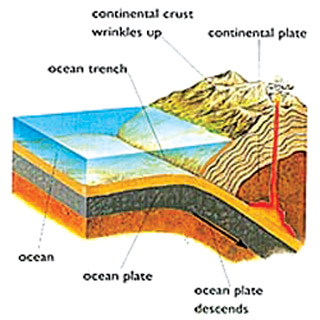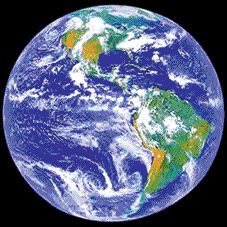|
Geo Scan:
The moving Earth...
Planet Earth - the only home we humans have is constantly subject to
change. Volcanic eruptions and earthquakes regularly change the surface
of the Earth, sometimes causing great catastrophies. Many new fault
lines and fractures have appeared on the Earth. In fact, seismologists
say that the recent (January) Haiti earthquake was caused as a result of
a new, undetected fault line.
 Even
scientists cannot predict these movements of the Earth due to the fact
that they are connected with the composition of the interior of the
Earth. So, let's see what the composition of the Earth is. Did you know
that it is made up of a succession of superimposed layers (placed one
above the another), they are the Earth's crust (continental and oceanic
plates), the mantle and the core (inner and outer)? Even
scientists cannot predict these movements of the Earth due to the fact
that they are connected with the composition of the interior of the
Earth. So, let's see what the composition of the Earth is. Did you know
that it is made up of a succession of superimposed layers (placed one
above the another), they are the Earth's crust (continental and oceanic
plates), the mantle and the core (inner and outer)?
The Earth's crust consists of granite or rigid crystal rocks. Its
thickness varies from 5 to 90 km (3 to 56 miles). The ocean crust which
is called the basalt is much thinner. The mantle which is about 2,900 km
(1,800 miles) is thick. The core which is a huge mass in fusion at a
temperature of about 5,500 degrees Celsius or 10,000 degrees Farenheit
forms the centre of the Earth.

The crust consists of moving plates and the continents stand on
these.
These plates glide constantly over the mantle, but it is very slight
and we do not feel it. This movement of the continents is called the
continental shift. Earthquakes and volcanic eruptions occur when these
plates collide.
Supercontinent
About 180 million years ago, there were no separate continents in the
world as we know today. The surface of our planet Earth was completely
different with only a huge land mass - the supercontinent in existence.
Over the years this land mass had broken up and drifted apart forming
the continents we are familiar with today. |

